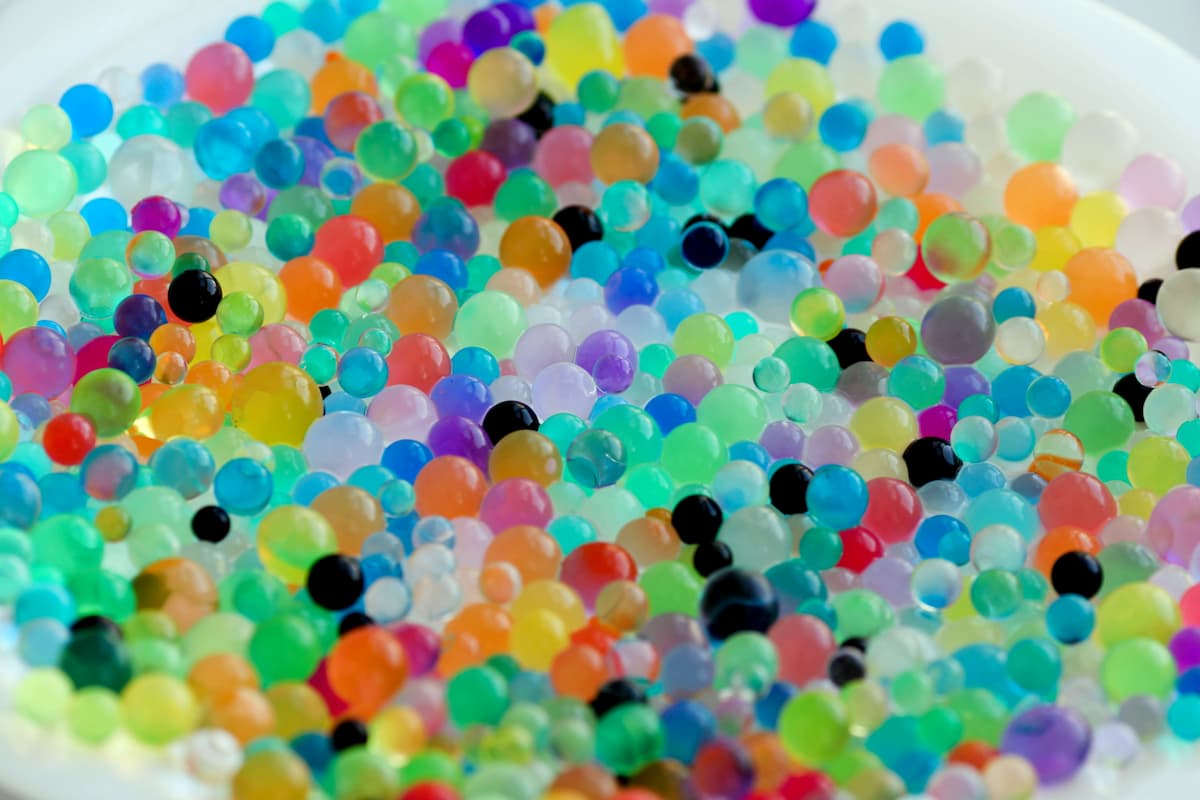Hydrogel is a material that can absorb and retain water up to several hundred times its weight, making it useful in agriculture to improve water retention in soil, increase plant growth and yield, reduce water usage, and enhance nutrient absorption. However, the overuse of Hydrogel can negatively impact soil structure, and its availability and cost may be a concern for farmers. This blog will discuss the benefits and disadvantages of using Hydrogel in agriculture, different types of Hydrogel, its application methods, factors affecting its performance, and research on hydrogel application in agriculture.

How to Use Hydrogel in Agriculture
What is Hydrogel in Agriculture?
Hydrogel is a material used in agriculture to improve the water retention properties of different soil types, such as clay and sandy loam. It is a superabsorbent material of polymers such as potassium polyacrylate or sodium polyacrylate. Hydrogel can absorb water and turn it into a gel, which helps to store water in the soil.
Hydrogel in agriculture can increase water-holding and water use, improve soil permeability, reduce the need for irrigation, reduce compaction and soil erosion, and improve plant growth. Hydrogels are hydrophilic crosslinked polymers that absorb and hold significant amounts of water.
Benefits of Using Hydrogel in Agriculture
- Increasing water holding capacity: Hydrogels can help retain moisture in the soil, making them useful in arid and semi-arid regions where water is scarce.
- Conserving water: Hydrogels can save up to 40-70%, reducing the need for irrigation and related costs.
- Improving soil permeability and germination: Hydrogels can help improve the soil’s permeability and increase crops’ germination rate.
- Enhancing fertilizer and herbicide efficiency: Hydrogels can help bind fertilizer ions, reducing leaching losses and the amount of fertilizer required.
- Reducing water runoff and soil erosion: Hydrogels can absorb excess water and prevent runoff, reducing soil erosion and preserving fertile topsoil.
- Biodegrading gradually into non-toxic materials: Agricultural hydrogels have a quick rewetting capability and are less affected by soil salts.
- Increasing plant yield: Hydrogels can create an ideal environment for plant growth, increasing output by 10-25%.
In case you missed it: The Agricultural Aspects of Cover Crops

Types of Hydrogel Used in Agriculture
Agricultural Hydrogels can be classified into three main types, each with its unique properties and applications.
- Starch graft copolymers: These hydrogels use natural starch as a base for grafting, which helps to create granules of appropriate size for agricultural use.
- Crosslinked polyacrylates: These hydrogels are made by crosslinking polyacrylate polymers with metal ions such as Na and K. They are non-toxic and highly suitable for use in agriculture.
- Crosslinked polyacrylamides and Acrylamide acrylate copolymers: These hydrogels use Acrylamide as a base material, which is highly porous and best for agricultural use. However, there is a concern that these hydrogels may contain residual Acrylamide or degrade to form it, a potent neurotoxic chemical.
How to Use Hydrogel
Hydrogels are commonly used in agriculture to improve water retention and plant growth. Two main types of hydrogels are available in the market: crystals and powder. Crystals are best suited for larger areas like crop fields, while powder is ideal for potted plants. The best time to apply hydrogels is during seed sowing or field preparation. There are two methods of application: the dry method and the wet method.
Dry method: Hydrogel crystals are mixed with dry soil or sand at a ratio of 1:10 (1kg hydrogel for 10kg of sand) and then applied on open furrows during seed sowing or broadcasted during the application of fertilizer. The recommended depth for application is 4-6 inches or 10-15 cm, but for vegetable crops. It should be less at around 5 cm.
Wet method: It is typically used by greenhouse and home gardeners. Hydrogel crystals are soaked in water for 30-60 minutes to fluff them up in this method fully. They can then be used as a growing media before transplanting or incorporated into the growing media.
How Does Hydrogel Work?
Hydrogel works by forming an amorphous, gel-like mass when mixed with soil. It can absorb and desorb water over an extended period, serving as a slow-release water supply within the soil. This increases the soil’s water-holding capacity, providing plants with constant moisture and nutrients. As the surrounding soil dries, the stored water is gradually released back into the soil, reducing the need for frequent irrigation.
The Hydrogel also improves soil porosity, allowing for better air and water infiltration, root growth, and plant viability. The hydrogel polymer acted as a slow-release basis of water and dissolved fertilizers in the soil, which reduces fertilizer usage and enhances plant growth. By increasing soil moisture and nutrient levels, Hydrogel can significantly increase crop yield.
In case you missed it: Biodynamic Agriculture for Profitable Farming

Disadvantages of Using Hydrogel in Agriculture
- Cost: Hydrogels can be expensive to purchase and apply.
- Environmental concerns: Improper disposal of hydrogels may negatively impact the environment.
- Risk of overuse: Overusing hydrogels can lead to soil waterlogging, reducing oxygen supply to plant roots.
Application of Hydrogel in Agriculture
- Hydrogels can be applied in agriculture in various ways to enhance crop growth and productivity.
- As a seed coating or additive to support seed germination and growth.
- Dipping seedling roots in Hydrogel before planting to enhance establishment and early growth.
- Immobilizing plant growth substances such as hormones and nutrients to regulate their release over time.
- Coating protecting agents such as herbicides and pesticides for slow release reduces their application frequency.
- Hydrogels also have several benefits in agriculture, such as increasing water use efficiency, reducing irrigation frequency, minimizing soil erosion, and enhancing soil infiltration.
Factors Affecting Hydrogel Performance
- Soil type and structure
- Hydrogel dose and particle size
- Environmental conditions like temperature and humidity
- Quality of water used for hydration
- Placement depth of Hydrogel in soil
- Age and size of the crop.
Effect of Hydrogel on Plant Growth and Water Efficiency
- Effect of Hydrogel on Plant Growth and Water Efficiency Hydrogel application has shown positive effects on plant growth and water efficiency.
- Hydrogels can absorb and retain water, thus providing a continuous supply of moisture to the plant roots, especially during drought conditions. This can result in improved plant growth, higher yield, and better quality of crops.
- Hydrogels have also been demonstrated in studies to boost water use efficiency, indicating that less water is used to produce the same crop. This has the potential to have enormous economic and environmental benefits, particularly in locations where water is limited.
- Moreover, Hydrogel can also improve soil structure by increasing its porosity and reducing compaction, leading to better aeration and nutrient uptake by plants.
Conclusion
Using Hydrogel in agriculture can improve water efficiency, increase crop yields, and decrease fertilizer use. However, there are also disadvantages, such as potential environmental harm and cost. Hydrogel can be applied through dry or wet methods and has various applications, such as seed additives and coating protection agents.
- Feed Your Flock for Less: Top 10 Tips to Save on Chicken Feed
- Ultimate Guide to Ossabaw Island Hog: Breeding, Raising, Diet, and Care
- Hatching Answers: The Top 10 Reasons Your Chickens Aren’t Laying Eggs
- Eggs and Economics: Breaking Down the Cost of Raising Backyard Chickens
- Defend Your Greens: Proven Methods to Keep Iguanas Out of Your Garden
- Ultimate Guide to Cinnamon Queen Chicken: A Comprehensive Guide for Beginners
- Ultimate Guide to California Tan Chicken: Breeding, Raising, Diet, Egg-Production and Care
- Ultimate Guide to Marsh Daisy Chicken: Breeding, Raising, Diet, and Care
- 10 Types of Chicken Farming Businesses You Can Start for Profits